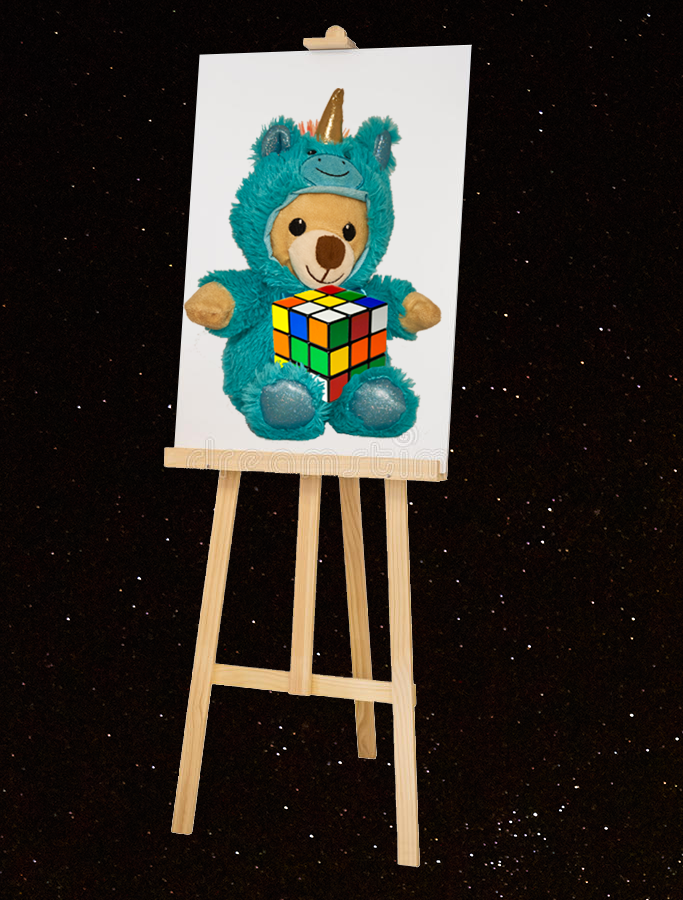When you think about your school career, do you remember this child who had difficulty in the main subjects, but who had an incredible talent in the arts? The one who could draw everything and anything without effort and who knew how to make incredible works from clay, paper or cardboard? The one who spent his spare time making models or painting? Or who could solve an extremely difficult puzzle in seconds? Perhaps you were even this child. Well, it’s a safe bet that the main intelligence of this one was visual spatial intelligence.

But what is it exactly? The people in whom this type of intelligence is most developed usually uses a drawing or a graph to explain their thoughts and need a concrete image to understand a new concept. ‘’ A picture is worth a thousand words ’’ defines their way of thinking particularly well. They excel in artistic activities and are very attracted to art in general. They have the ability to easily represent things in 3D and find their bearings in space very well. They often have a highly developed imagination and a good sense of direction. The creation of puzzles and puzzles is often very easy for them.
A child with the most advanced visual and spatial intelligence will be very imaginative. He will love to paint, draw, make models and will be very sensitive to colors and shapes. For him, optimal learning will depend on concrete images. It is visual and will need visual support to fully understand a new concept or idea. Using his imagination will stimulate him and motivate him to learn.
People in whom visual-spatial intelligence is dominant are often attracted to fields of study such as fashion, architecture, geography and the visual arts (painter, photographer, graphic designer, videographer, etc.)
Ideas to enhance this type of intelligence in a child in whom it is predominant.
- Offer him puzzles or puzzles like the Rubik’s cube for example. To increase the level of difficulty, offer him to do the puzzle without being able to see the image.
- He loves art so take the opportunity to offer him artistic material and even enroll him in lessons. His talent will amaze you.
- From an early age, he will be attracted to blocks and construction toys. Do not hesitate to offer him some according to his skill level. Although he will be quite capable of reproducing a model easily, he likes to use his imagination. So also invite him to create his own models.
- The pictograms are very useful with these children. They will greatly facilitate his understanding of the routine. So don’t hesitate to use them.
- Homework and lessons are difficult? Are there any concepts he has trouble understanding? Use photos, graphics or drawings to help them understand the information. Working on additions and subtractions by counting real objects like toothpicks or small blocks or by drawing circles on a sheet representing each number will help him a lot at the start. Quickly, he will manage to do it without that since he will now have a mental image and be able to call on his imagination. Learning vocabulary is difficult? Suggest that they write a word on a piece of paper, look at it carefully, then close their eyes and spell it.
- Get him a camera. He will love it.
- For older children, suggest that they take notes using pictures. Sketchnotes or mind-maps work very well for these children. (see links at the end of the articles for more information)
Ideas to help a child develop this type of intelligence when it is not dominant.
- Suggest activities that allow the development of the imagination: role playing, mime, drawing, painting, DIY, photos … There is surely one that will interest him.
- First read the page of his book without him seeing the pictures and ask him what he thinks there will be on the picture before showing it to him.
- Invite him to describe what he sees with specific words and as much detail as possible.
- Put several objects in front of him and invite him to look at them for a few seconds. Then ask him to close his eyes or turn his back while you make one or more disappear. He will have to tell you which one or which one have disappeared.
- Play observation games, find and find games, etc.
And you, what are your ideas to help the development of this type of intelligence? Is it your main intelligence or that of one of your children?
INTERESTING LINKS:
SKETCHNOTING :
https://www.idkids.fr/enfant/education-et-vivre-ensemble/lecole/apprendre-a-apprendre-avec-le-sketchnoting
MIND-MAPS :
http://www.petitestetes.com/parentalite/developpement-de-lenfant/le-mind-mapping-pour-les-enfants.html